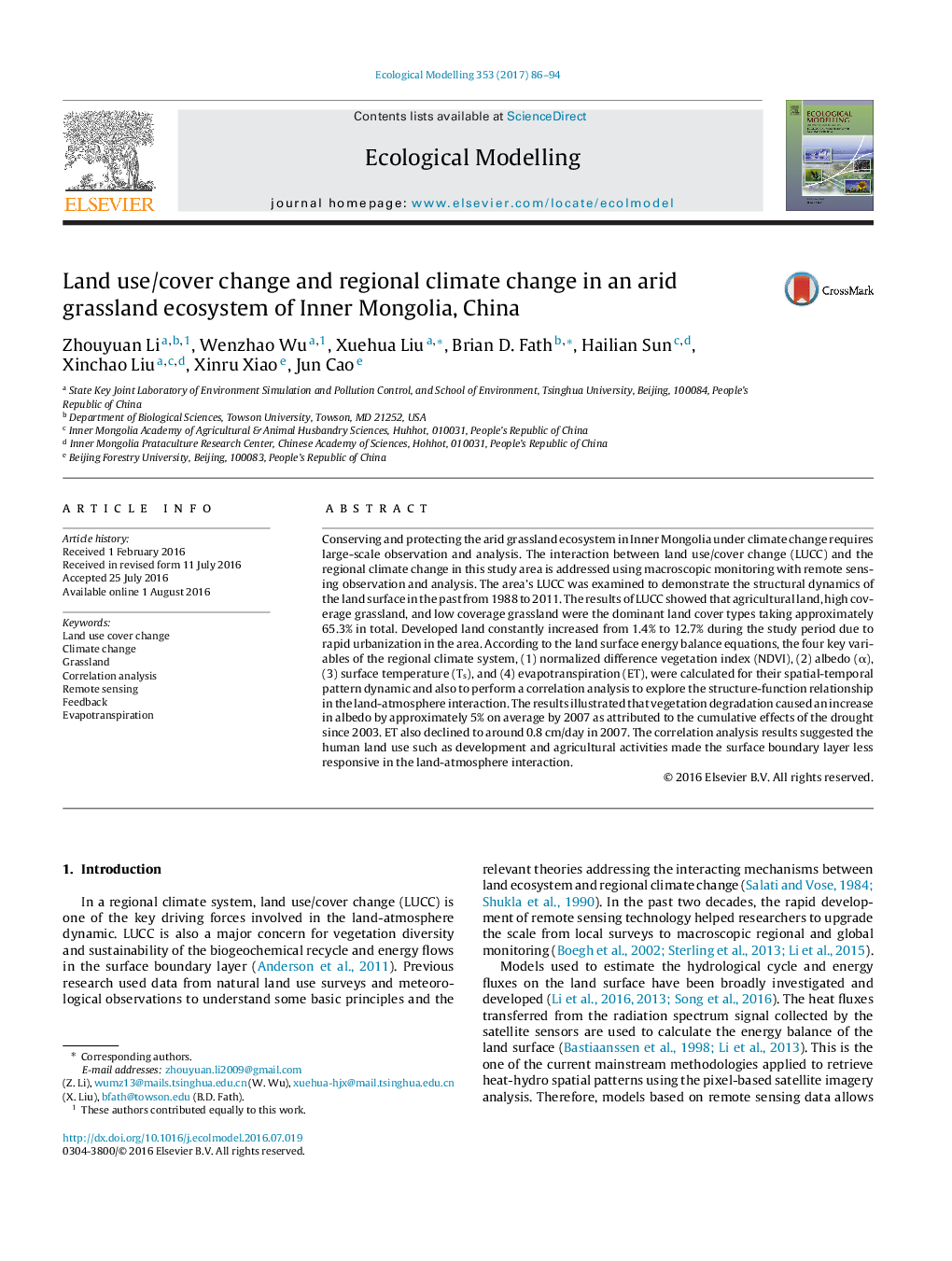| کد مقاله | کد نشریه | سال انتشار | مقاله انگلیسی | نسخه تمام متن |
|---|---|---|---|---|
| 5742169 | 1617394 | 2017 | 9 صفحه PDF | دانلود رایگان |
- The land use/cover change during 1989-2011 of the arid grassland in middle of Inner Mongolia China was examined.
- The spatial-temporal patterns of the key variables in land-atmosphere process were calculated and illustrated.
- The hypothesis that natural land cover has stronger effects on the regional climate than the human land use was testified.
Conserving and protecting the arid grassland ecosystem in Inner Mongolia under climate change requires large-scale observation and analysis. The interaction between land use/cover change (LUCC) and the regional climate change in this study area is addressed using macroscopic monitoring with remote sensing observation and analysis. The area's LUCC was examined to demonstrate the structural dynamics of the land surface in the past from 1988 to 2011. The results of LUCC showed that agricultural land, high coverage grassland, and low coverage grassland were the dominant land cover types taking approximately 65.3% in total. Developed land constantly increased from 1.4% to 12.7% during the study period due to rapid urbanization in the area. According to the land surface energy balance equations, the four key variables of the regional climate system, (1) normalized difference vegetation index (NDVI), (2) albedo (α), (3) surface temperature (Ts), and (4) evapotranspiration (ET), were calculated for their spatial-temporal pattern dynamic and also to perform a correlation analysis to explore the structure-function relationship in the land-atmosphere interaction. The results illustrated that vegetation degradation caused an increase in albedo by approximately 5% on average by 2007 as attributed to the cumulative effects of the drought since 2003. ET also declined to around 0.8 cm/day in 2007. The correlation analysis results suggested the human land use such as development and agricultural activities made the surface boundary layer less responsive in the land-atmosphere interaction.
299
Journal: Ecological Modelling - Volume 353, 10 June 2017, Pages 86-94
